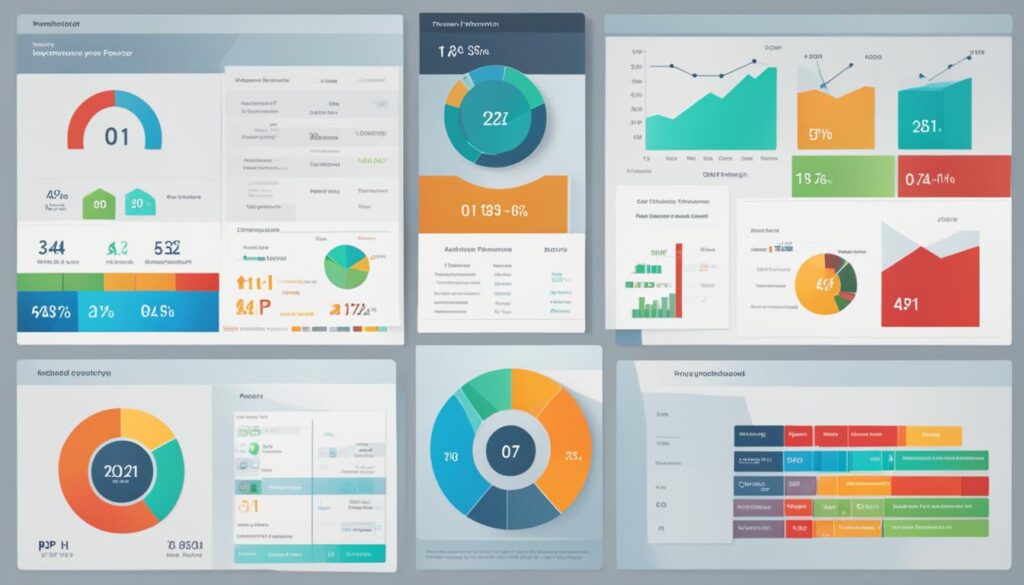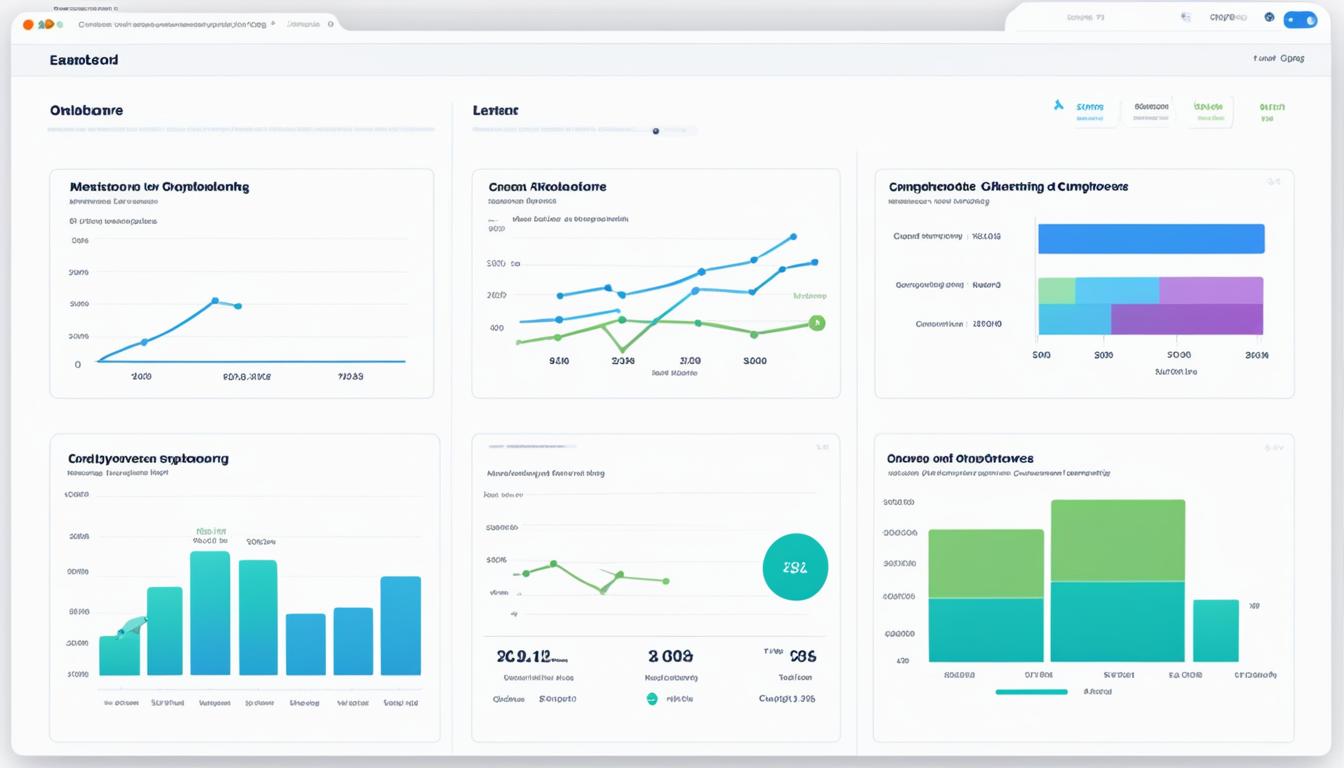Welcome to our guide on measuring employee onboarding success through key performance indicators (KPIs) and metrics. Effective onboarding plays a crucial role in setting the stage for a successful employer/employee relationship. To ensure the continuous improvement of this important process, HR teams must quantify its effectiveness using relevant metrics.
Tracking employee onboarding KPIs and metrics provides valuable insights into the employee experience, retention and recruitment rates, and overall success of the onboarding process. By analyzing these metrics, HR teams can identify areas for improvement and make data-driven decisions to optimize their onboarding strategies.
Throughout this article, we will explore key metrics to track for measuring onboarding success, discuss the importance of onboarding and how it is measured, and highlight the benefits of analyzing onboarding metrics. The insights gained from measuring these metrics will help your HR team create a seamless integration process, ultimately resulting in higher employee engagement, improved job performance, and increased retention rates.
Key Takeaways:
- Measuring employee onboarding through KPIs and metrics is essential for optimizing the integration process.
- New-hire satisfaction, turnover rates, retention rates, training completion rates, time to productivity, engagement rates, and net promoter score (NPS) are some of the main metrics to consider.
- An effective onboarding process leads to higher employee engagement, improved job performance, and greater retention rates.
- Continuously monitoring and analyzing onboarding metrics enables HR teams to make data-driven decisions and enhance the onboarding experience.
- By investing in successful onboarding, organizations can realize the full return on their recruitment and hiring investments.
Importance of Onboarding and How it is Measured
Onboarding plays a crucial role in the employee lifecycle, as it sets the foundation for new employees’ success within the company. It is during the onboarding process that new hires form their initial impressions of the organization, its culture, and their role within the company. A positive onboarding experience is essential to maximize the return on recruitment and hiring investments, as it increases employee satisfaction, engagement, and productivity.
To ensure the effectiveness of the onboarding process, HR teams employ various measurement methods. By gathering and analyzing relevant metrics, organizations can gauge the success of their onboarding efforts and identify areas for improvement. These metrics provide valuable insights into the employee experience, retention and recruitment rates, and overall business results.
Some of the metrics commonly used to measure employee onboarding include:
- New-hire satisfaction levels: By collecting feedback from new employees, organizations can assess their satisfaction with the onboarding process, the support received, and their overall experience.
- Voluntary and involuntary turnover rates: Tracking the number of employees who leave voluntarily or involuntarily during the onboarding period provides valuable information about the effectiveness of the integration process.
- Retention rates: Measuring the percentage of new hires who stay with the company beyond a certain period helps organizations understand the overall success of their onboarding efforts.
- Training completion rates: Monitoring the completion rates of required training programs helps gauge the effectiveness of the onboarding process in providing new hires with the necessary knowledge and skills to perform their job.
- Time to productivity: Tracking the time it takes for new employees to become fully productive gives insight into how well the onboarding process prepares them for their roles and responsibilities.
By diligently measuring these onboarding metrics, HR teams can identify strengths, weaknesses, and areas for improvement within their onboarding processes. This data-driven approach allows organizations to make informed decisions, optimize their onboarding strategies, and create a seamless integration experience for new hires.

Having a comprehensive understanding of the importance of onboarding and implementing measurement methods enables organizations to enhance the onboarding experience, increase employee satisfaction and engagement, and ultimately drive positive business outcomes.
Key Onboarding Metrics to Track
When it comes to measuring onboarding success, there are seven key areas that HR teams should be monitoring. These metrics provide valuable insights into the effectiveness of the onboarding process and help identify areas for improvement. The key onboarding metrics to track include:
- New-Hire Satisfaction: Measure the satisfaction levels of new hires to gauge their overall experience during the onboarding process.
- Turnover Rates: Track both voluntary and involuntary turnover rates to assess the retention of new hires.
- Retention Rates: Evaluate how well new hires are being retained within the organization.
- Training Completion Rates: Monitor the percentage of new hires who successfully complete the required training programs.
- Time to Productivity: Measure the time it takes for new hires to become fully productive in their roles.
- Engagement Rates: Assess the level of engagement and commitment new hires demonstrate towards their work and the organization.
- Net Promoter Score (NPS): Collect feedback from new hires to determine their likelihood of recommending the company to others.
By closely tracking these onboarding metrics, HR teams can evaluate the success of their onboarding processes, identify areas for improvement, and make data-driven decisions to enhance the overall onboarding experience for new hires. This proactive approach ensures a seamless integration of new employees into the company and sets the foundation for their long-term success.

Benefits of Measuring Onboarding Metrics
Measuring onboarding metrics has numerous benefits for HR teams and organizations. By tracking important metrics related to the onboarding process, you can gain valuable insights into its effectiveness and identify areas for improvement. This data-driven approach allows you to optimize the onboarding experience, leading to a range of advantages for your company.
1. Enhanced Onboarding Experience
When you measure onboarding metrics such as new-hire satisfaction, turnover rates, retention rates, and training completion rates, you can identify pain points and make targeted improvements. By addressing these areas of concern, you can enhance the onboarding experience for new employees, ensuring they feel supported, engaged, and excited about their role within the organization.
2. Increased Employee Engagement
Effective onboarding sets the foundation for long-term employee engagement. By measuring onboarding metrics, you can fine-tune your onboarding strategies to create a positive and engaging experience for new hires. When employees feel valued and connected to the company from the beginning, they are more likely to become actively engaged in their work, leading to higher productivity and job satisfaction.
3. Improved Job Performance
Measuring onboarding metrics allows you to monitor the time it takes for new hires to reach full productivity. By analyzing this data, you can identify any bottlenecks or gaps in training that may be hindering their ability to perform at their best. By addressing these issues through targeted training and support, you can accelerate the learning curve, leading to improved job performance and efficiency.
4. Increased Retention Rates
An effective onboarding process has a direct impact on employee retention. When employees feel supported, engaged, and connected to the organization, they are more likely to stay for the long term. By measuring onboarding metrics such as turnover rates and retention rates, you can identify any red flags and take proactive measures to improve retention. This can save your organization valuable time and resources associated with constantly hiring and training new employees.
Measuring onboarding metrics enables HR teams to make data-driven decisions and continuously improve the onboarding process. By focusing on these key measurements, you can create a seamless and effective onboarding experience that benefits both new hires and the organization as a whole.
Conclusion
Measuring the success of your employee onboarding process is essential for optimizing the integration of new hires into your organization. By tracking key performance indicators (KPIs) and metrics, such as new-hire satisfaction, turnover rates, retention rates, training completion rates, time to productivity, engagement rates, and net promoter score (NPS), you gain valuable insights into the effectiveness of your onboarding efforts.
These metrics not only provide a clear understanding of your onboarding process but also help you identify areas for improvement. With data-driven decisions, you can enhance the onboarding experience and drive employee engagement, leading to improved job performance and positive business outcomes.
Measuring onboarding success is an important step for organizations to realize the full return on their recruitment and hiring investments. By creating a positive employee experience from the start, you set the foundation for long-term success and retention. Takeaways from measuring onboarding success include the importance of continuously monitoring and analyzing onboarding metrics, as well as leveraging the insights gained to refine your onboarding strategies and create a seamless integration of new hires.
FAQ
What are the key KPIs and metrics for measuring employee onboarding success?
The key KPIs and metrics for measuring employee onboarding success include new-hire satisfaction, turnover rates, retention rates, training completion rates, and time to productivity. These metrics help HR teams assess the effectiveness of the onboarding process and identify areas for improvement.
Why is onboarding important, and how is it measured?
Onboarding is important as it sets the foundation for new employees’ success and forms their impression of the company. It is measured using metrics such as new-hire satisfaction levels, turnover rates, retention rates, training completion rates, and time to productivity. These metrics provide insights into the onboarding process’s effectiveness and help improve it.
What are the key onboarding metrics to track?
The key onboarding metrics to track include new-hire satisfaction, turnover rates, retention rates, training completion rates, time to productivity, engagement rates, and net promoter score (NPS). These metrics provide valuable insights into the onboarding process’s effectiveness and enable data-driven decision-making.
What are the benefits of measuring onboarding metrics?
Measuring onboarding metrics has several benefits, including identifying areas for improvement, enhancing the onboarding experience, increasing employee engagement, improving job performance, and achieving positive business outcomes. It helps HR teams make data-driven decisions to optimize the employee integration process.
What are the key takeaways regarding measuring employee onboarding success?
The key takeaways regarding measuring employee onboarding success include the importance of tracking KPIs and metrics like new-hire satisfaction, turnover rates, retention rates, training completion rates, and time to productivity. By measuring these metrics, HR teams can enhance the onboarding experience and realize the full return on recruitment and hiring investments.




